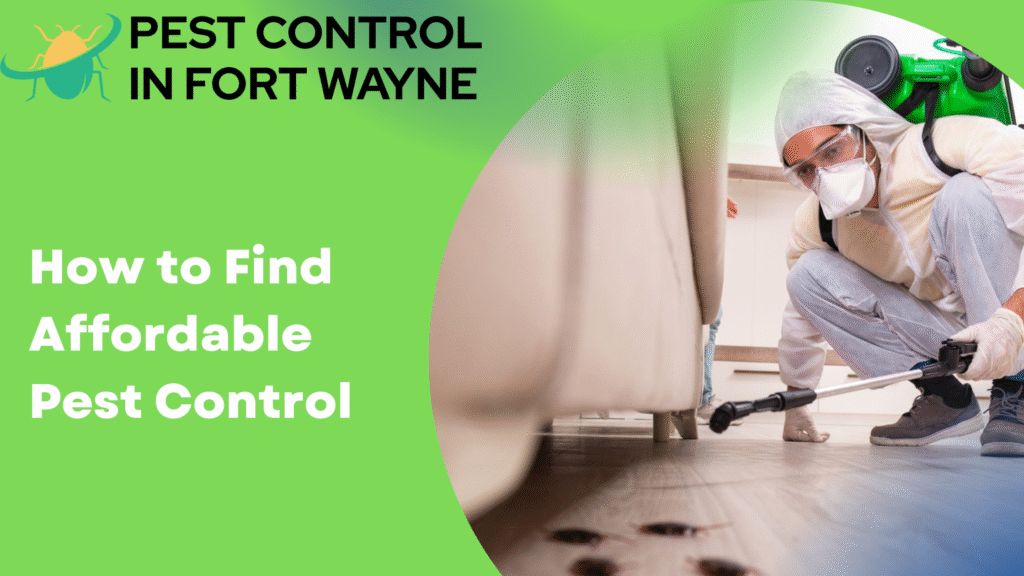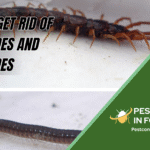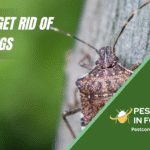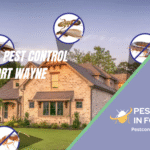Pests are more than just a nuisance—they can damage your property, contaminate food, and even cause health issues. Hiring a professional pest control service is essential, but many homeowners worry about the cost. The good news is that you don’t have to overspend to get quality pest control.
In this guide, we’ll show you how to find affordable pest control services without compromising on safety, effectiveness, or long-term results. You’ll learn how costs are determined, what to look for in a provider, and strategies to save money while keeping your home or business pest-free.
Why Affordable Pest Control Matters
Pest control is an investment in your home, health, and peace of mind. Infestations left untreated can cause:
-
Structural damage (e.g., termites chewing through wood)
-
Health risks from bacteria and allergens
-
Stress and inconvenience
Affordable pest control ensures that all homeowners, not just those with high budgets, can access professional services. It’s about balancing cost and quality so you get effective results without breaking the bank.
Factors That Affect Pest Control Costs
The price of pest control services varies depending on multiple factors:
-
Type of Pest: Treating ants or spiders is cheaper than dealing with termites, bed bugs, or rodents.
-
Property Size: Larger homes or commercial properties require more time, labor, and products.
-
Severity of Infestation: A minor ant problem costs less than a full-blown rodent infestation.
-
Treatment Type: Eco-friendly treatments or Integrated Pest Management (IPM) can affect cost.
-
Frequency of Service: One-time treatments are different in cost from ongoing quarterly or monthly plans.
Understanding these factors helps homeowners make informed choices and avoid overpaying for services that aren’t necessary.
How to Find Affordable Pest Control Services
Finding budget-friendly pest control requires research and comparison. Here are some practical tips:
1. Compare Multiple Quotes
Get at least 2–3 estimates from local pest control providers. Comparing prices helps you understand the market rate and avoid overpaying. When requesting quotes, ask for a detailed breakdown of costs, including labor, products, and follow-up visits.
2. Look for Local Companies
Local pest control companies often offer competitive pricing compared to national chains. They also know local pests and seasonal patterns, which makes treatments more effective. Supporting local businesses can also provide personalized service and faster response times.
3. Ask About Packages and Plans
Many companies offer bundled services that save money in the long run. Quarterly or annual service plans often cost less per visit than one-time treatments and include ongoing inspections and preventive measures.
4. Check for Promotions and Discounts
Seasonal discounts, first-time customer offers, and referral programs can significantly reduce costs. Always ask if the company has current promotions or packages that fit your needs.
5. Explore Eco-Friendly and Integrated Pest Management (IPM)
Eco-friendly treatments may seem more expensive upfront but can save money over time. IPM focuses on prevention rather than repeated treatments, which reduces the frequency and cost of service.
Ensuring Quality While Keeping Costs Low
Affordable doesn’t mean compromising on quality. Look for pest control providers who offer:
-
Licensing and Certification: Ensures the company follows state regulations and safe practices.
-
Reviews and Testimonials: Positive feedback indicates consistent results and professionalism.
-
Written Guarantees: Re-treatment promises if pests return add value and confidence.
-
Safe, Effective Treatments: Avoid companies that use unsafe chemicals or shortcuts just to save money.
Choosing a provider that balances affordability and reliability ensures you get long-term results without unnecessary expenses.
Red Flags: Cheap Pest Control That Can Cost You More
While affordable pest control is possible, extremely low-priced services often come with risks:
-
No License or Insurance: This can result in unsafe treatments and no legal recourse.
-
Too-Good-to-Be-True Pricing: Extremely low rates may indicate cutting corners or hidden fees.
-
No Written Contract: Without a clear plan, you may end up paying extra for follow-ups or additional treatments.
-
One-Size-Fits-All Solutions: Pests require customized approaches; generic methods often fail.
Avoid these red flags to ensure that the affordable option you choose is still safe, effective, and professional.
Cost of Common Pest Control Services
Understanding the cost of common pest control treatments helps homeowners plan their budget while ensuring quality service. Here’s a detailed breakdown:
| Pest Type | Average Cost Range | Notes |
|---|---|---|
| General Pest Control | $100 – $300 per visit | Includes ants, spiders, and small infestations |
| Rodent Control | $150 – $600 | Depends on the size of the infestation and exclusion methods |
| Bed Bug Treatment | $500 – $1,500 | Multiple visits often required |
| Termite Treatment | $1,000 – $3,000 | Includes inspections, baiting, or liquid treatment |
| Mosquito/Flea Control | $100 – $500 per visit | Seasonal treatments recommended for outdoor areas |
| Wasp/Bees Removal | $150 – $600 | Nest size and location affect pricing |
Tips:
-
Ask providers if these costs include follow-up visits.
-
Quarterly or annual packages can reduce the per-visit cost.
-
Eco-friendly treatments may cost slightly more upfront but save money over time by preventing repeated infestations.
DIY Pest Control vs. Professional Services
Many homeowners consider DIY methods to save money, but it’s important to know when DIY is effective and when professional help is necessary.
DIY Options:
-
Minor ant or spider problems can be managed with store-bought sprays, traps, or natural remedies.
-
Regular cleaning and sealing entry points can prevent many small infestations.
Professional Services:
-
Severe infestations like bed bugs, termites, or rodents require licensed exterminators.
-
Professionals use regulated products and targeted strategies for long-term results.
-
DIY methods may save money short-term but often lead to higher costs if pests return or spread.
Takeaway: Use DIY for minor prevention, but rely on professionals for serious infestations to protect your property and health.
Questions to Ask Before Hiring an Affordable Pest Control Company
-
Are you licensed and insured?
Licensing ensures the company follows state regulations and uses safe, approved products. Insurance protects you from accidental damage during service. -
Do you offer free inspections?
A free inspection allows you to understand the infestation and get a detailed treatment plan without upfront costs. -
What treatment methods do you use?
Ask about chemicals, traps, or eco-friendly alternatives. Ensure they are safe for kids, pets, and the environment. -
Do you provide written guarantees?
A guarantee or warranty ensures the company will re-treat if pests return, adding value to the service. -
Are there ongoing maintenance plans?
Regular treatments reduce the risk of recurring infestations and often cost less per visit.
Balancing Cost and Quality: Final Tips
-
Prioritize prevention: Proper sealing, cleaning, and minor treatments can reduce the need for expensive visits.
-
Choose value over lowest price: Extremely cheap services may fail, causing higher costs in the long run.
-
Look for trusted local providers: They often provide personalized service at a lower price than national chains.
-
Ask about packages: Quarterly or annual plans save money while ensuring ongoing protection.
Conclusion
Affordable pest control is possible without compromising on quality. By understanding the factors that affect costs, comparing quotes, asking the right questions, and focusing on prevention, homeowners can protect their property and health while staying on budget.
Always choose licensed, insured, and reputable providers and consider regular maintenance plans for long-term savings. Combining affordability with professional services ensures your home remains pest-free without unexpected costs or risks.
FAQs
1. How do I find affordable pest control near me?
Search for licensed local providers, request multiple quotes, and check for promotions. Reading reviews helps identify trustworthy, budget-friendly options.
2. Is cheap pest control effective?
Not always. Extremely low prices may indicate cutting corners. Choose affordable services that are licensed, provide guarantees, and use safe treatment methods.
3. What is the average cost of pest control services?
Costs vary by pest type and property size. General pest control ranges $100–$300 per visit, while bed bug treatments can cost $500–$1,500.
4. Can I negotiate pest control prices?
Yes, many companies offer discounts for bundled services or first-time customers. Always ask about seasonal promotions or packages to lower costs.
5. Are pest control contracts worth it?
Yes, recurring plans ensure ongoing protection and prevent infestations from returning. They often reduce the per-visit cost compared to one-time treatments.
6. Does affordable pest control mean lower quality?
Not necessarily. Affordable pest control can be high-quality if the company is licensed, uses safe products, and offers guarantees or follow-up visits.
7. Is DIY pest control cheaper than professional?
DIY may be cheaper initially but may not eliminate serious infestations. Professional services offer long-term results and reduce the risk of repeated problems.
8. What’s the best way to save money on pest control long-term?
Prioritize prevention, schedule regular inspections, use eco-friendly treatments, and choose value-focused local providers to reduce costs without sacrificing quality.







